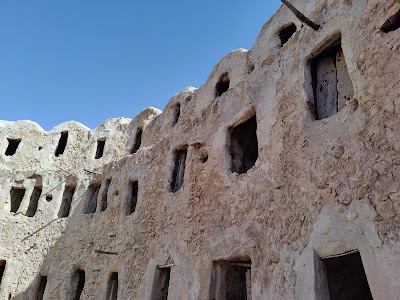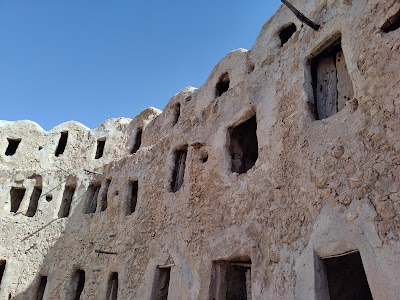Qasr al-Haj (قصر الحاج)
Overview
Introduction to Qasr al-Haj
Nestled in the heart of the stunning Wadi al Shatii District in Libya, Qasr al-Haj, or "The Palace of the Pilgrim," offers visitors a captivating glimpse into the rich history and cultural heritage of the region. This historical site, once a pivotal stop for travelers making their way to the sacred sites of the Islamic world, has become a symbol of the enduring spirit of Libyan hospitality and tradition. For foreign travelers, Qasr al-Haj is not just a landmark; it is a gateway to understanding the deep-rooted customs and vibrant history of the Libyan people.
Architectural Marvels
The architecture of Qasr al-Haj is a stunning blend of Islamic and local Libyan styles, characterized by its intricate designs and use of natural materials. The structure features thick stone walls that have withstood the test of time, adorned with decorative motifs and calligraphy that tell stories of the past. As you wander through the halls and courtyards, the echoes of history come alive, inviting you to imagine the countless pilgrims who once passed through its gates. The atmosphere is serene, punctuated by the sounds of rustling palm trees and the distant whisper of the Wadi al Shatii river, enhancing the experience of exploring this remarkable site.
Historical Significance
Qasr al-Haj played a critical role in the trans-Saharan trade routes and pilgrimage paths, serving as a resting place for travelers, merchants, and pilgrims on their way to Mecca. The site’s strategic location made it a vital hub for trade and cultural exchange, where diverse cultures converged, sharing stories, goods, and traditions. This historical significance is palpable, and visitors can feel the weight of centuries of human experience embedded within its walls. Exploring Qasr al-Haj offers a unique opportunity to reflect on the interconnectedness of cultures and the importance of hospitality throughout history.
Exploring the Surrounding Area
The Wadi al Shatii District is not only home to Qasr al-Haj but also boasts breathtaking natural scenery and rich biodiversity. Travelers can explore the surrounding landscapes that feature dramatic desert vistas, lush oases, and vibrant wildlife. The region is perfect for outdoor enthusiasts looking to embark on hiking or photography adventures, with numerous trails leading to picturesque views and hidden gems. Additionally, connecting with local communities offers insights into traditional Libyan life, where customs and culinary delights await discovery.
Practical Information for Travelers
For those planning to visit Qasr al-Haj, it is advisable to check local travel advisories and ensure a safe journey. While Libya has experienced its share of challenges, several areas, including Wadi al Shatii, are becoming increasingly accessible to tourists. Engaging with local guides can enhance your experience, providing deeper insights into the history and culture of the site. Remember to respect local customs and traditions, particularly when visiting religious or historical sites. With a spirit of adventure and curiosity, Qasr al-Haj promises to be an unforgettable chapter in your travel story.






